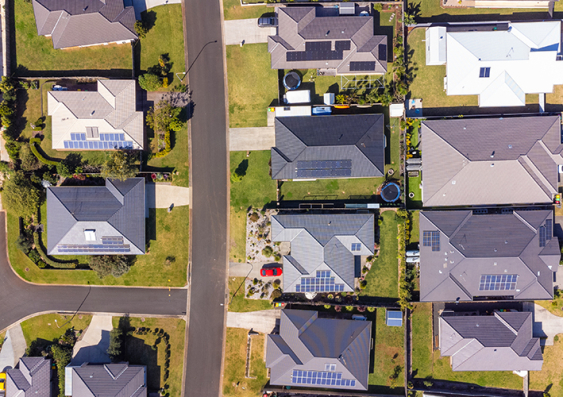The funding will expand our understanding of how Australians are using renewable energy sources and how to better integrate them into the National Energy Market.
Australia is a global leader in rooftop solar installations with approximately 40% of free-standing dwellings with a rooftop system. Household-battery and EV ownership is also increasing rapidly.
Now, UNSW Sydney researchers have been awarded $1.7 million by the Australian Renewable Energy Agency (ARENA) to explore the integration of these sorts of devices, known as consumer energy resources (CER), into the National Energy Market (NEM). Ā
CER include rooftop solar panels, batteries, electric vehicles and chargers.
The project will span three years, analysing real-world data sets and developing new tools to understand better the integration challenges caused by increased ownership of these devices.
The integration of household and small business-owned CER into the electricity grid is a critical step towards achieving the national renewable energy and emissions reduction targets, says ARENA CEO Darren Miller.
CER technologies and products were at the heart of the clean energy transition, turning consumers into active participants in our energy system, he said.
āCER is about decentralising energy production by harnessing the power generated by rooftop solar panels, batteries and smart home devices. Creating a more flexible, cleaner energy grid will help reduce emissions while improving energy resilience,ā he said.
Localised energy production could reduce network vulnerabilities
Mr Miller said it was vital we understood how the rollout of solar panels, EVs and other CERs affected the network.
āThere is a knowledge gap whereby we donāt fully understand how CER impacts the energy grid. This project aims to plug this gap, helping us understand how the rollout of CER technologies can be done in a way that maintains the stability of the energy grid.
āCER presents a powerful shift in the way energy is produced. It localises energy generation, gives consumers control over their energy footprint, and can potentially help balance supply and demand. This will make Australian communities less vulnerable to energy disruption.ā
The UNSW project will provide insights that the Australian Energy Market Operator (AEMO) and Distributed Network Service Providers (DNSPs) can use in their work to maintain safe and efficient network operations. It will alsoĀ improve our understanding of CER operations in normal and critical network conditions.
Project lead Dr Baran Yildiz, a senior lecturer at UNSWās School of Photovoltaic and Renewable Energy Engineering, said Australiaās clean, reliable and affordable energy transition was being led by CER.
āWe need ongoing evidence-based and data-driven research to improve our understanding of CER operations in real-world conditions.
āOur study will give us key insights on the effectiveness and implications of various network measures governing CER operations. Weāll also build tools that will help maximise benefits for society while maintaining and supporting network security.ā
The project builds on work done previously by UNSW including through the ARENA-funded and .
Media enquiries
For enquiries about this story, please contact Louise Templeton.
°Õ±š±ō:Ģż0413495994
·”³¾²¹¾±±ō:Ģżlouise.templeton@unsw.edu.au
Related stories
-

As Australiaās net zero transition threatens to stall, rooftop solar could help provide the power we need
-

Coal-free in 14 years as renewables rush in: new blueprint shows how to green the grid ā without nuclear
-

Should we worry about wasting renewable energy? Hereās why āspillingā excess power is expected ā and efficient




.jpg)
